Many people will tell you that fly fishing is a challenging hobby and that it’s far too complex for a beginner to enjoy this beautiful sport. Dismiss all that noise immediately. With some essential gear, a few flies, and an afternoon or two of practice, you’ll be on your way to becoming an excellent fly angler.
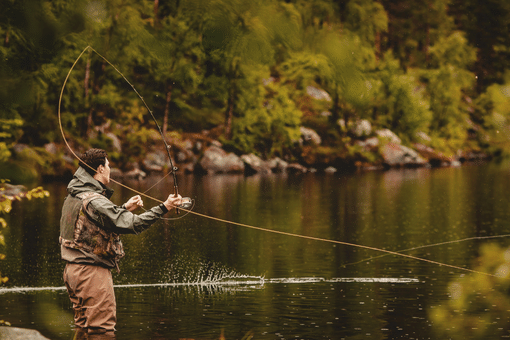
Read on as we cover everything you’ll need to know about fly fishing for beginners.
What Is Fly Fishing?
Fly fishing is a style that gets its name from the lures, known as “flies,” that you use to catch fish. The practice goes back thousands of years, with the ancient Romans and Japanese engaging in a primitive version of fly fishing.
Unlike spin or conventional fishing, where anglers cast a weighted lure, fly fishing is slightly different. Flies and lures are virtually weightless, and the angler relies on a weighted line to deliver their fly to where fish are holding in the water column.
Compared to other fishing styles, fly fishing requires the most finesse to succeed, and it’s as much an art as a hobby.
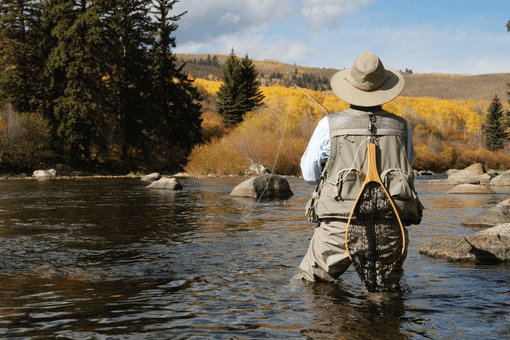
Essential Fly Fishing Gear
Fly fishing requires essentials that every angler will need to begin fishing. Outside of a landing net, fly box, and a good pair of neoprene waders and wading boots, here’s what you’ll need:
- Fly Rod: Traditionally made from graphite, fiberglass, or carbon fiber, tiny eyelets run the rod length to guide the line. Come in one and two-hand varieties and usually break down into at least two pieces to make transporting the rod easier. Sometimes sold as a rod and reel combo.
- Fly Reel: The most straightforward fishing reel, managing the fishing line. Most provide a 1:1 gear ratio, so each crank of the handle returns one turn worth of line to the reel. Outfitted with a drag system that makes pulling line from the reel more challenging, which is critical when fighting a fish.
- Fly Line: The main line that allows you to cast flies. Has a braided core with a PVC outer shell, and the PVC coating adds weight to the line to facilitate casting.
- Fly Backing: A line is used to pad your reel’s capacity but isn’t actively used when casting. Most anglers use braided fishing line between 20-30 pound test for their backing.
- Leader: The portion of the line you present to fish attaches to your main. Made from either monofilament or fluorocarbon and comes in many sizes and diameters for targeting different fish species.
- Tippet: Like fly leader and is used to extend the leader’s length or decrease the line diameter at the tip to improve fly presentation.
- Flies: Serve as the bait you’ll use to catch fish and are commonly made from basic crafting supplies, such as feathers, thread, or fur. Tied around a single hook to look like small insects or bait fish.
Types of Fly Rods
As you begin shopping for your first fly outfit, you’ll notice several different types of fly rods. Here’s a beginner’s guide to each rod type.
Single-Handed Rods
Single-handed rods are the most common, typically between 8-10′ long. You can buy rods according to the fly line they accommodate, and most fly fishermen opt for a 5-6 weight rod in the 9′ range.
This rod weight allows you to target a wide range of species and is still light enough to provide a thrilling fight when you hook into smaller fish.
As the name implies, you are meant to cast single-handed rods with one hand, and anglers employ standard fly casts with these rods.
Switch Rods
Switch rods exist in a middle ground between single-handed and Spey rods. These rods enable you to “switch” between single-hand and double-hand casts. Switch rods are longer than single-handed rods but smaller than Spey rods. Most switch rods are between 10-12’6″ long, and rods around 11′ are the most popular length.
Switch rods can be handy when fishing big water, as they allow you to cover more ground with your cast. For this reason, an experienced fly fisher will use switch rods to cast nymphs and dry flies. Switch rods also perform well for Spey casts and other water-anchored casting styles.
Spey Rods
Spey rods are the longest and heaviest type of fly fishing rod and are critical for Spey casting. Spey rods feature a long foregrip section, and they’re 13′ or longer, with some rods eclipsing the 20′ mark.
While their long length may seem unwieldy, Spey rods make the work of the angler easier. When casting with a double-handed rod, there’s no back cast, enabling the angler to make long, accurate casts even when dealing with brush or trees behind you.
Types of Flies
Arguably, the fly itself is the most crucial component of any fly fishing setup and judging by the size of most anglers’ fly boxes, it’s true. So read on as we take a closer look at the art of fly tying and fly selection.
Dry Flies
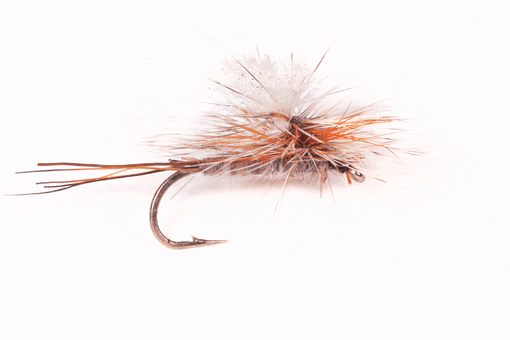
These lures are presented on the water’s surface and resemble adult insects. Some dry flies look like semi-aquatic insects that spend their life cycle between water and land, while others look like terrestrial insects that inadvertently flew to the water and are now struggling to free themselves.
The dry fly is nearly weightless, making it easier to trick fish like wary trout. These small flies float along the water without breaking the surface tension and sinking downward.
Wet Flies
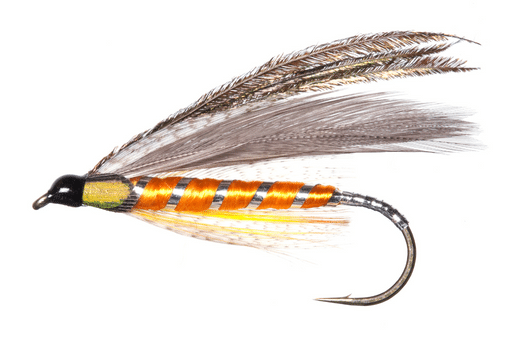
Wet flies are the broadest category of fly fishing lures and can replicate every stage of the insect or bait fish life cycle. You’ll find wet flies in larvae, emerger, and adult life cycles, along with larger wet flies that resemble other aquatic life.
Unlike dry flies, which float on the water’s surface, wet flies are fished sub-surface. The depth you present the fly will vary depending on the weight of the fly and your line.
Most wet flies have a weighted component, called a bead head, just below the hook eye. The bead head enables the fly to sink. In addition, depending on the head’s weight, the fly will present at different positions in the water column.
Streamers
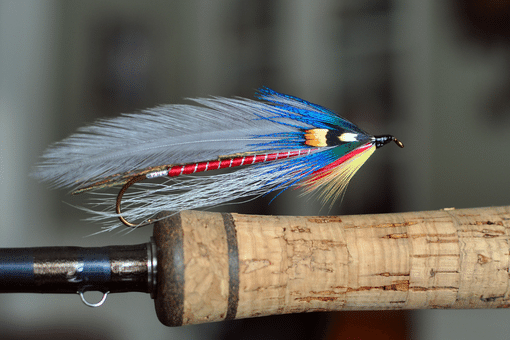
Streamers are the largest type of wet flies, and they’re made to resemble everything from leeches to insects to crayfish and small bait fish.
While anglers will let a dry fly coast along with the current, streamers require an active retrieve, where the angler slowly works the lure back toward them to prepare for another cast.
While you can fish streamers just below the surface, most anglers find these lures more productive toward the middle or bottom of the water column. Streamers like the wooly bugger can be especially effective when fishing deep, muddy, or stained water and make excellent saltwater flies.
Nymphs
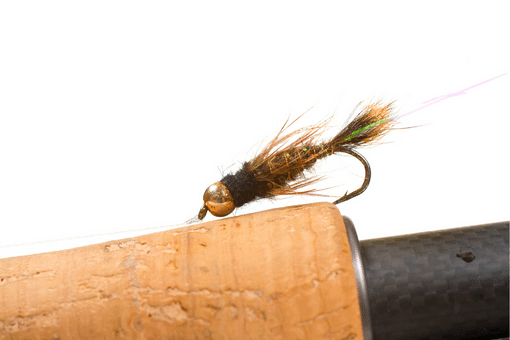
Nymphs, sometimes called emergers, are another style of wet fly that can be highly effective. These flies are tied to resemble aquatic insects emerging from their larval stage or small crustaceans.
Emerger patterns are especially effective when fishing for trout, as these vulnerable insects represent a large portion of their diet.
Types of Fly Reels
Let’s take a closer look at the reel, another critical component of a fly outfit. Most fly reels are classified by the type of drag system they employ.
Disc Drag
Disc drag reels are the latest style of fly reel and are the most popular. These reels employ a drag system similar to a car’s brakes. Inside these reels, there are ceramic plates that can slow or stop the line from spooling off the reel.
Using a knob on the side of the reel, the angler can tighten or loosen the drag according to the size of the fish they’re contending with. Tightening the drag makes it more difficult for a fish to pull line from the reel when they run, while loosening makes it easier to pull line from the reel.
In the early days of disc drag, these reels were characterized by a jerky motion that didn’t allow the line to leave the spool freely. Modern disc drag reels have corrected these issues and provide smooth operation and the drag power necessary to land fish.
Click & Pawl
Click and pawl reels feature an earlier style of drag system that isn’t as precise as disc drag. Some fly fishers prefer click and pawl reels because they’re easier to service and maintain, and there are fewer components, which means they’re lighter, and there’s less that can go wrong when you’re on the water.
These reels have a tiny tooth on one side, which engages with a fixed gear on the other side. The tooth catches on the gear, which slows the rotation of the spool when you fight fish. It’s a more primitive drag system, and it’s also difficult or impossible to adjust while you’re actively fighting a fish.
Since on-the-fly adjustments are a challenge, anglers create more drag by “palming” the reel with the side of their hand to add drag. This characteristic adds to the fight, and there are few things more exhilarating than catching a big fish on a click and pawl reel.
Types of Fly Line
One of the final things you’ll need to cover before you begin fly fishing is the different types of fly lines. All fly lines feature a braided core with an inner and outer cover made from PVC.
Fly lines are sold in different weights on a scale from 0-14, with heavier lines intended for longer casts or targeting larger fish.
Saltwater Fly Line
Saltwater fly line is available in floating, full sink, and sink tip configurations, and it’s specialized to meet the demands of saltwater fly fishing.
Floating Fly Line
A floating line is the most common type, and it’s the first line you’ll need as a beginner. The coatings on these lines are more buoyant than water, and the entire line floats at the surface.
Full Sink Fly Line
Full sink fly lines have an outer coating that contains tungsten, which allows them to sink entirely into the water when cast. These lines are sold according to their sink rate, with some falling as slowly as an inch per second to lines that fall a foot per second.
A full sink line is helpful when fishing deeper bodies of water where fish are holding lower in the water column. These lines need to be fished carefully, as there’s more opportunity for your fly to snag on the bottom, which will cost you your leader.
Sink Tip Fly Line
Sink tip fly lines combine floating and full sink lines. The front 10-15′ of line sinks in the water while the remaining line floats.
This line is helpful when targeting deep-holding fish around the structure, as the floating section helps you avoid snags.
Tapers
In addition to the different float characteristics, fly line is also available in different tapers. The taper refers to how wide or thin, heavy or light different sections of the line are, and they influence casting power and fly presentation.
- Double Taper: An older style of fly line that features a symmetrical taper throughout the entire line, double taper lines allow for easy mending and good casting accuracy, and you can reverse them to double the line’s life.
- Level Line: Level lines are the most simple line because they have no taper, with a uniform shape and diameter throughout the line. The lack of a taper makes level taper lines more difficult to cast and mend than double or weight forward tapers.
- Weight Forward: Weight forward line is the most popular fly line style, and it’s tapered so that most of the weight is toward the front of the line. Weight forward lines allow excellent cast distance and are more customizable than double taper lines.
How To String a Fly Rod in 6 Simple Steps
Once you select the ideal line for your fishing, here’s how to string your fly rod with line using a few basic knots.
Step 1: Decide Which Hand You’ll Use for Retrieving
Do you prefer to reel with your right or left hand? It’s essential to fish with a reel that lines up with your retrieval style and preferences. You can also use a reel that has the ability to switch from hand to hand.
Step 2: Tie the Backing Onto the Spool
Begin by wrapping your backing line around the arbor of your reel three times. Then, tie a uni knot with the standing line and tag end, cinch the knot down, and cut the tag end. While keeping tension on the line, spool the appropriate amount of backing onto your reel.
Step 3: Tie Your Fly Line to the Backing
Make a loop at the end of your backing by tying a surgeon’s knot that’s large enough to fit around the fly line spool. Bring the loop on the backing through the small loop at the end of the fly line, and pass the spool through the loop.
Pull the backing to create the loop-to-loop connection. Spool the fly line onto the reel while keeping tension on the line.
Step 4: Tie Your Leader Onto the Fly Line
Pass the loop at the end of your fly line through the loop at the end of your leader. Take the leader, double it over in your fingers, and pass it back through the loop in the fly line. Pull the entire leader through the loop to complete the connection.
Step 5: Tie Your Tippet Onto the Leader
Connect your tippet to your leader material using a blood knot.
Step 6: Tie a Fly Onto the Tippet
There are many ways to tie a fly onto the tippet, and every angler develops their favorite knot-tying method. We recommend the Pitzen knot for attaching flies to the tippet.
Basic Methods of Casting
You’ll want to practice casting with these two simple methods as you start fly fishing. Check out some helpful videos online to help improve your casting.
Roll Casting
Roll casting is easy to learn and incredibly useful when fishing in tight areas with an overhead brush. Here’s how to complete a roll cast.
- Ensure you have a few feet of line out in the water, and bring your rod back so that the rod tip is behind you and your casting hand is about even with your ear.
- Look where you want to cast your fly, which is the point you will follow through towards with your rod tip as the fly lands.
- Bring your hand forward and complete your casting motion, ensuring that your rod tip stays off the water.
- Repeat the cast as many times as necessary.
Overhead Casting
Another essential cast that’s critical for delivering the most natural fly presentation to your target is the basic overhead cast. Here’s how to complete the overhead cast.
- Begin with your rod tip close to the water and about 15 feet of line in the water.
- Raise your rod tip to the 10-o’clock position.
- Bend your forearm to quickly bring the rod from the 10-o’clock to the 2-o’clock position to complete your back cast.
- Pause briefly as the line loops behind you.
- Bring your rod from the 2-o’clock position to the 11-o’clock position to complete your forward cast.
- Follow the line down with your rod tip as it falls to lay it gently on the water.
Finding the Perfect Location To Begin Fishing
In the past, finding the perfect spots to fly fish took a lot of work. Most anglers had a handful of places to fish in their area, and they’d guard those spots with their life to protect them from being burned. Thanks to the internet, the fishing world is more connected than ever, and it’s easy for beginners to find excellent spots to fish.
When you’re looking to start fly fishing, the crew at your local fly shop and social media are indispensable resources. Join local social media groups to get spot ideas, and ask your tackle shop if they have any suggestions.
State and federal parks are always chock full of excellent fly fishing spots, so you’ll also want to explore these areas.
Another excellent way to find the perfect fly fishing spot is to hire a guide and spend a day on the water with them. Not only will they put you on fish, but they’re usually happy to offer some useful suggestions about other spots in the area that are ideal for avid fly fishermen.
Final Thoughts
Of all the ways you can enjoy the great outdoors, fly fishing remains the best way to connect with your environment and enjoy everything mother nature offers. Whether casting from shore, on a boat, or wading into waist-high water, few hobbies connect you to the natural world like fly fishing can.
As you start your fly fishing adventures, do plenty of reading on the trade, study your local waters closely, and fish them often. Fly fishing for beginners may require a bit of practice and dedication, but the rewards it provides are well worth the effort.
- Do You Need An Indicator For Nymph Fishing? - November 16, 2023
- Fishing Safety Tips For Families - September 25, 2023
- What Is The Best Time To Night Fish At A Lake? - September 18, 2023




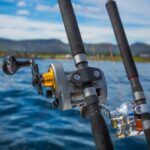
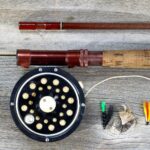
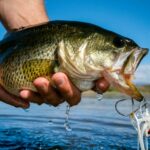
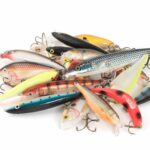
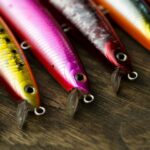

![Kayak Fishing for Beginners [10 Tips for a Successful Trip] fishing kayak moored on a beach](https://irvinelake.net/wp-content/uploads/2022/12/kayak-fishing-for-beginners-150x150.png)